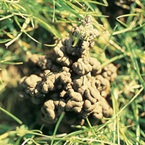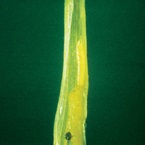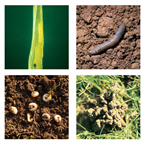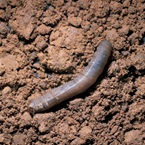Phyllopertha spp
Category:
Turf Pests
Description:
There are four common species of Chafer grubs in the UK; the Cockchafer, the Garden Chafer, the Summer Chafer and the Welsh Chafer. These all have differing lifecycles and present a key challenge at multiple stages of their lifecycle.
Adult beetles emerge from their pupal cases and begin to fly in large numbers (in heavily infested areas) at dusk from late May to June. Adults fly to nearby trees and shrubs where they mate on mass until dawn at which point the adults return to the soil. Climate influences this behaviour with less flight and mating taking place on cool and/or rainy nights. Several mating flights may be made but eventually the females lay 15-20 eggs over a 2-5 day period. Eggs are laid 15-20 cm deep in the
turf and hatch in about 2 weeks. If moisture levels are good the larvae move up toward the surface and begin to feed on plant roots. In drier conditions they may remain lower down in the soil. Larvae feed until around late September when they move deeper into the soil where they overwinter. Pupation then takes place the following Spring (around mid-May) normally 5-15 cm below the surface. Some species of Chafer grubs may feed below ground for 2-3 years before changing into adult
beetles. This means that larvae may be found at any time of the year though there will be higher numbers in Spring and Autumn.




